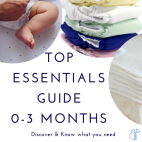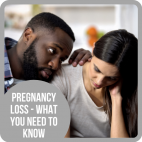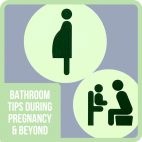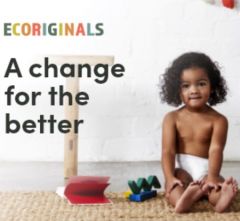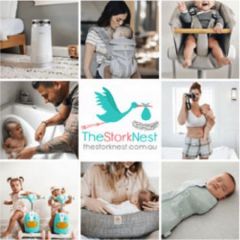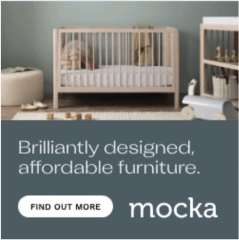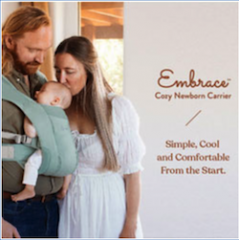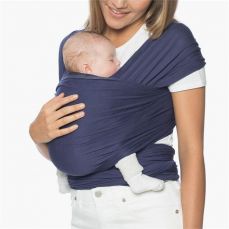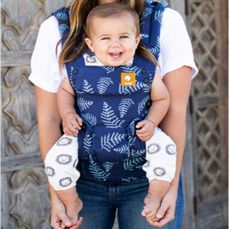Choosing a Baby Car Capsule Transport Suitable for stages: Pregnancy, 0 - 3 Months, 3 - 6 Months
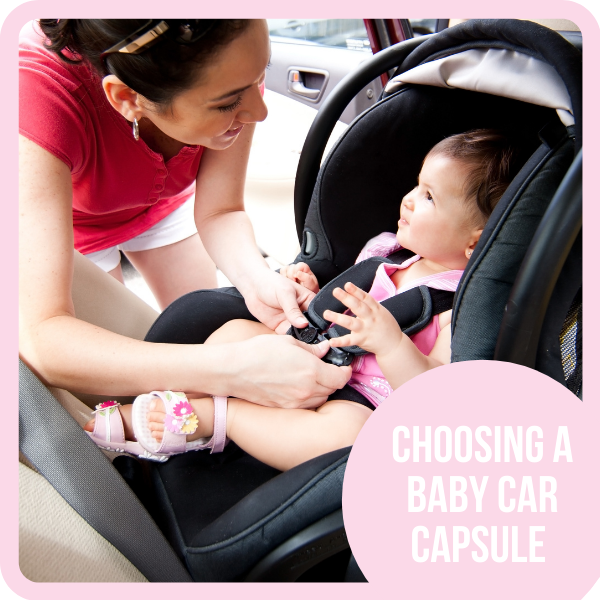

Before your baby even arrives, you have a few important decisions to make. Two of the biggest purchases can be the first car seat and the pram/stroller.
Your car seat could influence your choice of pram/stroller and vice versa if you want to use a travel system (where the car capsule is compatible with a stroller frame).
Newborns can be fitted in either a convertible car seat or a car capsule system from birth. Rearward facing car travel in an approved car seat is law in Australia for newborns up to at least 6 months old. After 6 months, they can be forward-faced; however, many seats allow from extended rearward facing until 12 months, others up to 30 months.
This guide explores in depth everything you need to know about car capsule/travel system/carriers.
What is a capsule/carrier?
To clarify, a car capsule is also known as a carrier - different manufacturers use differing terms.
Capsules can be part of a travel system where the capsule is compatible with clipping into a stroller frame from the same manufacturer or several manufacturers.
In this article, we will refer to the car seats as car 'capsules' to make things easier.
Car capsules are a dedicated rearward-facing seat designed to be taken in and out of the car with the baby in it. A base unit is installed on the back seat of the car—the capsule clips into and out of this base unit.
It is designed for small babies with versions available for very premature babies.
There are 2 types available on the market:
A1 - Fits baby from a small newborn baby up to between 6 - 8 months.
A2 - Fits baby from a small newborn baby up to between 12 - 18 months.
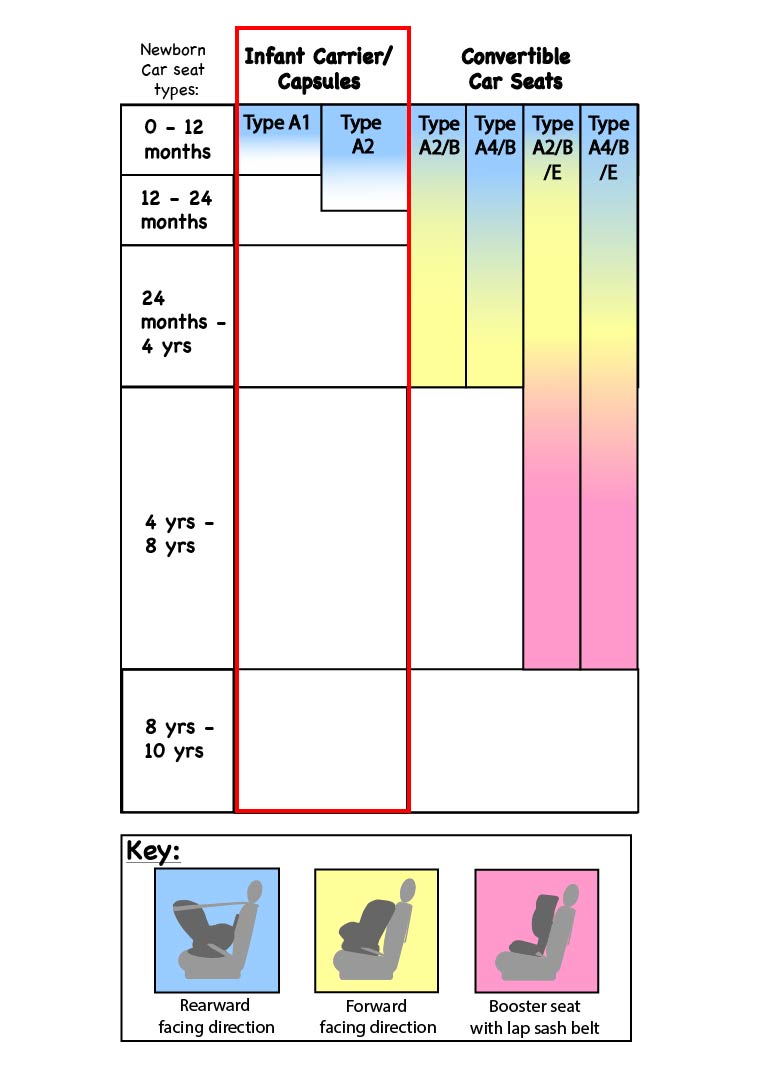
How does it work?
The base unit is installed on the car's back seat using either Isofix fastenings or the seat belt. The capsule unit can be clipped into and out of the base unit.
A top tether strap secures the capsule when travelling, anchored between the car seat and the top of the capsule. Each time the capsule is removed from the car, the top tether strap needs to be detached and removed and reattached when the capsule is reinstalled.
The baby is strapped in using a 5 or 6-point harness when in the capsule.
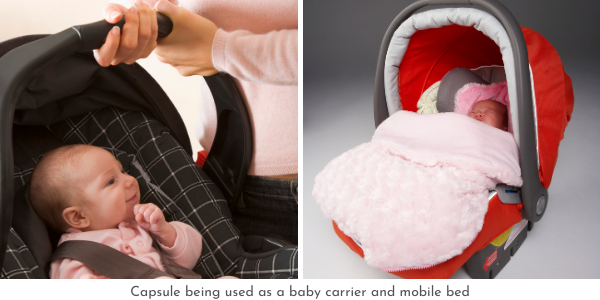
The capsule has a large handle which is moved back and out of the way when travelling, then pulled up to lift the carrier out of the car.
In some models, the handle moves down to the capsule base to steady the capsule when on the ground. The handle can usually also be moved to allow the capsule to rock back and forth when on the ground. This converts the capsule into a baby rocker seat.
Capsules have a shade cover or canopy to protect your baby from the sun when out and about. The size and coverage of this cover could be something to consider when buying the capsule.
What is a travel system?

Capsules are designed to be compatible with certain stroller frames for easy transportation. These are also known as travel systems. If wanting to attach the capsule to a pram/stroller, it’s worth deciding on the capsule when deciding on the stroller to make sure they are compatible.
You don't have to use your capsule as a travel system; it can just be used as a car seat if that's all you want it for. According to most manufacturers, the capsules are "only designed to enable the safe transportation of children in motor vehicles".
Being informed before you buy can help you decide how best to use the product.
What are the benefits?
There are benefits to using a car capsule. These include:
1. Convenience for parent
You can move your baby in and out of the car without needing to move them out of the capsule. This minimises disturbance for the baby when travelling from place to place. Lots of parents like the convenience of the options the capsule gives them. Babies who fall asleep in the capsule can remain sleeping, potentially extending naps by keeping the baby in the capsule whilst carrying or attaching the capsule to a stroller frame.
Great for parents doing school/pre-school drop-offs for older children.
2. Supportive for small babies
The baby feels secure in the capsule as they are more rounded and tend to hug the baby with built-in supports.
There are capsules specifically designed with smaller harnesses for premature or low birth weight babies and additional support for the head and body.
It is important to know that some babies love the cocoon feeling of being in a capsule and will be soothed by it; other babies may hate it. This issue may be resolved by re-adjusting the seat, or it could be just the baby's preference.
3. Converts to a rocker
The baby capsule handle can be re-positioned to convert the capsule into a rocking seat or a non-rocking seat. For safety, you should only ever put the capsule on the ground.
4. Makes sense to hire rather than buy
It may make sense to hire the capsule rather than buy it as they use it for such a short period - potentially saving money.
5. Capsules attached to strollers can be parent-facing (and sometimes outward facing)
Babies can be monitored easily in the stroller as the capsules usually parent-face. Having the baby parent facing helps the parent to bond with their child and monitor their comfort levels at a glance.
6. Space-saving in the car
The capsule is easily removed from the car when not in use, taking up less space while creating more storage space across the back seat for other needs.
Using a travel system pram can mean a more compact fold to take up less space in the boot.
You may not need a bassinet option on the stroller/pram for the newborn stage. After your baby has grown out of the capsule, you may be able to move to a normal stroller seat suitable for over 6-month-old
7. Easy to move between cars when an additional base is purchased
An additional base can also be purchased if the seat needs to be frequently moved between cars to save time having to uninstall and re-install the seat.
What are the risks and pitfalls?
There are some important safety concerns to consider before deciding on a car capsule. There are many benefits to using a car capsule; however, there are also pitfalls. Being aware of the pitfalls can help parents reduce the risks associated with unsafe carrier use:
1. Falls risk for baby
Falls from capsules are common according to rednose.org.au discussed here.
Reducing this risk:
- Plan to only occasionally use the capsule outside the car
- Wherever you place the capsule when not in its base, make sure it is secure
- Never place on a high surface.
2. Falls risk for caregiver when carrying the capsule
The size, shape and materials used in capsules are designed to keep your baby safe in the car. They can be awkward to carry, obstruct your view of the ground, and put an uneven load on your body.
Reduce this risk by:
- Try carrying the capsule with a baby's weight before you buy it - know your limits and remember that your baby is only going to get heavier.
- Try carrying close to your body with both arms supporting the capsule in front of your body.
- Carefully check the ground in front of you for trip hazards as you walk.
- Limit the distance you are carrying the capsule. Use a compatible stroller when possible. Place in a shopping trolley only if it is secure and can’t move around.
3. Baby’s position causes decreased oxygen levels
Capsules tend to encourage a 'C' spinal position, which has been found in studies to lead to decreased oxygen to the brain and body. This oxygen deprivation can affect brain function and has tragically led to death from positional asphyxiation.
Reduce this risk by:
- Consider buying an A2 type model which will last longer and has a larger seat.
- Choose a model where the seat's shape is not too curved, and it either comes with a head support, or you can buy a compatible head support.
- Limit the time your young baby spends in the capsule to under 30 minutes per day and ideally only during car trips.
- If your baby is sleeping and they have been in the capsule for some time, consider moving them to another surface or a carrier when they are in a deep sleep.
- Pick them up regularly so they can stretch out and extend their body.
- Read the instructions for your capsule, most state "not intended to be a substitute baby cot or bed. It is only designed to enable the safe transportation of children in motor vehicles. Do not leave a baby in the restraint for long periods of time".
4. Reduced opportunity for caregiver touch and responsiveness
Time spent in capsules outside the car reduces the opportunities for touching and parent intervention. Touch is important in developing body awareness, exercising muscles through movement opportunities, and developing their sensory systems. Touch also helps you monitor your baby's temperature and need for a nappy or clothing change.
Reduce this risk by:
- Where you can, consider carrying your baby in arms or in a carrier instead of using the capsule.
5. Pressure risk on baby’s delicate skin
Babies skin is delicate. When they can’t change positions and cannot shift their own weight to move the pressure from being concentrated on one part of their body, this leads to skin sensitivity, irritation, and reduced blood flow.
Reduce this risk by:
- Regularly monitor your baby when they are in the capsule. Provide stretch breaks when possible.
- Check that their clothes, nappy or straps are too tight or restrictive.
- Check their skin for any signs of redness, rash, or marks.
6. Increased lifting for the caregiver
If the caregiver attempts to lift the capsule out of the car with your baby in it, it is heavier than just lifting the baby out of the seat. As your baby grows, so will the manual handling injury risk if you continue to attempt to lift the baby in/out in the capsule.
Reduce this risk by:
- Use safe manual handling techniques at all times (especially mothers who have had a c-section or have abdominal separation).
- Know what your lifting limits are and calculate the capsule's weight plus the baby before you try to lift it. Consider the average weight of babies at different ages: Newborn 3.5kg, 6 months 8kg, 12 months 10.5kg. As your baby grows, so might your strength but always be careful.
- Consider lifting your baby out separately to the capsule to break up the load.
7. The temptation to move to a forward-facing seat after the capsule is outgrown
Before you buy the capsule, consider the next seat you will need to buy and make sure this is affordable. From 6 months, your baby can legally be forward faced in an approved seat. Forward-facing seats are more upright and aren't as safe in an accident than rearward-facing seats. Some convertible seats allow rearward-facing up to 30 months which is the safest option if your baby will tolerate it.
Making a decision
Now you know the risks and benefits to baby capsules, you can be realistic about whether it's worth investing in a capsule type car seat or whether to look for a convertible car seat. If you choose a convertible car seat, then your pram/stroller choice is unlimited.
The capsule decision is tied up with the pram decision to use it as a travel system. Choose what is more important, the capsule or the stroller then make sure what you choose 2nd is compatible with the 1st choice.
We hope this helps you to make the best decision for you and your baby.
Happy shopping!
Search for Car Seats on the Baby Bunting | eBay Store
Please note: Above all, any information on this website aims to provide general ideas for informational and educational purposes only. We encourage users to investigate several information sources, including, where necessary, independent individualised medical advice before making any decisions that could affect you or your child’s health or wellbeing.
* BabyPeg participates in various affiliate programs and may earn a commission for referring our users through the links provided. This is at no additional cost to our users. We take great care in choosing products and services which align with the mission of promoting better health and wellness for our BabyPeg community. Where possible, products are tried and tested by us. To continue to provide BabyPeg as a free service and reach as many parents as possible, we appreciate your support in using the link provided to purchase if you decide the product is right for you.
